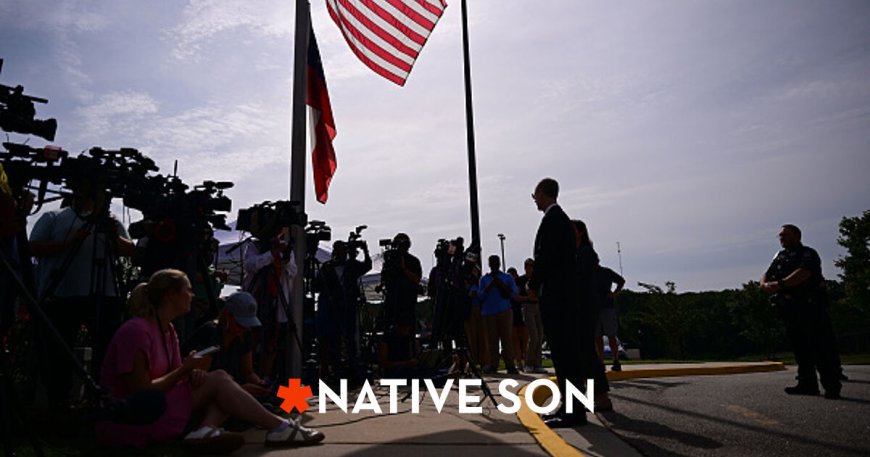Living with trauma: Is our tolerance for violence too high?
Lasting change will require us to reconsider our own tolerance for death in society. Living with trauma—and ignoring it—distracts us from the work of healing.


One evening about a decade ago, I was working as an evening news producer, reviewing footage of the Nigerian terrorist group Boko Haram, when my mom called and asked what I was doing.
“Watching militants behead people and roll them into a mass grave,” I replied.
The casual and detached manner in which I answered gave us both pause.
How about we take this to the next level?
Subscribe to our newsletter for a refreshing cocktail (or mocktail) of LGBTQ+ entertainment and pop culture, served up with a side of eye-candy.
Subscribe to our Newsletter today
“Should you be watching that stuff?” she asked. “I don’t think so,” I said, “but it’s my job.”
I left that job later that year, and I haven’t watched any videos of people dying since. I refuse to look at body cams of Black people killed by police, and if anything from the September 4, 2024, shooting at Apalachee High School in Barrow County, Georgia, was released, I won’t watch it either.
At first, it was simply because having those images as part of my memory wasn’t healthy for me. But as more traumatic images of death entered the public domain, I realized that each event returned me to that evening when my mom’s question made me understand how even once-ordinary people could be transformed into executioners, enacting the rawest and most intimate expressions of human carnage.

That doesn’t mean I’m not paying attention, desensitized, or have checked out—quite the contrary. But in a country where moral progress has come on the literal backs of our mutilated bodies, I am aware that disturbing visuals of human suffering could be exploited for short-term sensationalism, which Black history warns doesn’t necessarily instigate lasting change.
One of the first graphic images to go viral was in 1863, two years into the Civil War. Military doctors from the Union Army were examining a man who had escaped from a plantation in Louisiana when they discovered gruesome scarring on his back.

The man, Peter (formerly known as “Gordon”), had been horrifically whipped by an overseer. The doctors documented “Peter’s Back,” and the image was published throughout the North, shocking naïve white people into reinterpreting the brutality of slavery, and reshaping the story of enslaved people in the imagination of Northerners.
Thirty years after Peter, when Ida B. Wells-Barnett, then a young journalist, heard that a friend had been lynched, she decided to investigate mob violence in the South. Until her death in 1931, Wells-Barnett, one of the founders of the N.A.A.C.P., photographed, investigated, lobbied four presidents, and published about the thousands of victims of extrajudicial murders carried out by mobs during a century of terrorism. But despite the evidence and her incredible willpower, no legal protections came.
In 1955, Mamie Till-Mobley kept her son’s casket open, and Jet Magazine published the photo that shocked the conscience of the country and inspired an early example of multi-racial outrage. However, despite the emotion elicited by the image of Emmett Till’s disfigured face from lynching, shooting, and drowning, calls for justice were ignored by President Eisenhower.
Instead, FBI Director Herbert Hoover used his power to redirect the vortex of energy toward their personal priorities re-election and the Korean War—and away from anti-lynching legislation that would have protected Black people from white racists.
On March 29, 2022, more than 100 years after it was first introduced, after more than 200 failed attempts through 21 U.S. Presidents, and propelled by the force of the global Black Lives Matter movement sparked by the televised lynching of George Floyd—President Biden signed the Emmett Till Antilynching Act into law, finally establishing lynching as a hate crime.

It was clear to me that though disturbing images got people’s attention and fed the media’s irascible appetite for sensationalism, they did not translate quickly enough into laws that would have saved lives and justified broadcasting these people’s final moments to the world. It was too little too late. Sympathetic gestures, political promises, or public outrage no longer moved me.
More important to me now is reframing our relationship to American culture, which has too high of a tolerance for death and equivocates on who deserves protection and whose rights can be postponed or rescinded.
From slavery and Jim Crow to the AIDS Crisis and the serial murders of Black trans women, our individualism and disregard for each other’s well-being has reached its nadir.
As we witnessed in Georgia, our children are now killing each other while the conversation on gun control continues to be minimized.
Lasting change will require us to reconsider our tolerance for death in society. Living with trauma—and ignoring it—distracts us from the work of healing.
Perhaps if we can learn to manage our exposure to these horrific images and address the systemic violence in America, then we can join with those who draw from alternative sources of knowledge to produce a vision for America that centers genuine care for others and prioritizes life and healing.
The stakes for humanity are too high for anything less.

 Mark
Mark 





